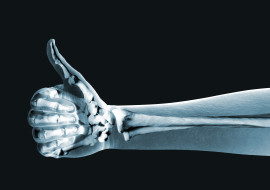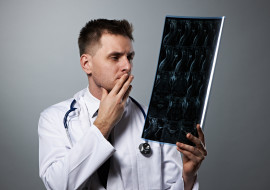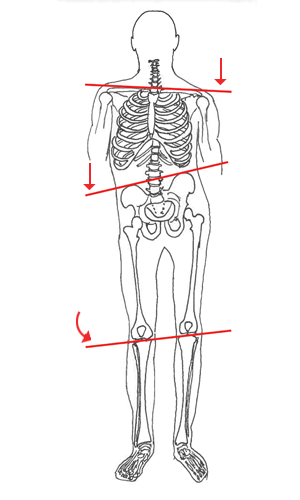As described before (see home page) a non-contagious disease of the skin or another organ, can only exist if there is a connection between this organ and the central nervous system (CNS).
This connection is found in the autonomic nervous system (ANS), a part of the CNS and situated in the spinal cord (= the central part of the ANS) and outside the spinal cord (= the peripheral part).
The latter are the nerves which exchange information between the central ANS and the organs, blood vessels, skin, hair, glands, …
The ANS shows a further subdivision into two important regions: The Parasympathetic and the (Ortho)sympathetic system.
Both work opposingly but also complement eachother and ensure that each organ, gland, skin, … works as well as possible in order to maintain a healthy state. The immune- and hormonal systems are also linked to the ANS.
The ANS expresses itself for example by accelerating or decreasing the heartbeat, by looking pale or blushing, by opening or narrowing the trachea, …
The pictures below are a summary of the connections of the different levels of the ANS with their organs, blood vessels, glands, and the skin as its end points.
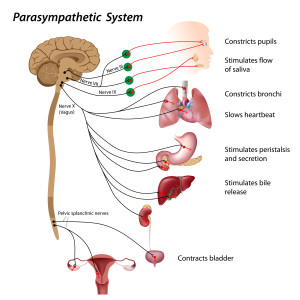
- 1. The Parasympathetic nervous system
The parasympathetic ANS is subdivided in two areas: the highest(cervical) and the lowest(sacral) part.
The highest part is positioned high in the cervical area, very close to the 1st and 2nd cervical vertebra. It concerns the Xth cranial nerve (Vagus nerve).
This nerve receives certain information from organs but also provides certain commands to organs from the head down to roughly halfway the intestines. Every organ which is passed downwards by this nerve is controlled. And thus also the sinuses, trachea, and lungs are under control of this parasympathetic nerve.
The lowest parasympathetic area is found in the sacral bone (part of the pelvis girdle) and is responsible for the lower part of the intestines, the bladder and the reproductive system.
From these organs sensitive information is acquired and commands to them are sent back
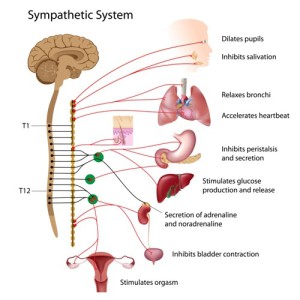
- 2. The (Ortho)Sympathetic nervous system
The second, or (ortho)sympathetic part of the ANS is located in the thoracic spine and the upper two lumbar vertebrae.
Through a clew of connections with nervous ganglia, these nerve vessels receive information from organs, glands, skin, …
They send commands to the organs from the eyes down to the genitals, including the skin, glands, blood vessels, …

